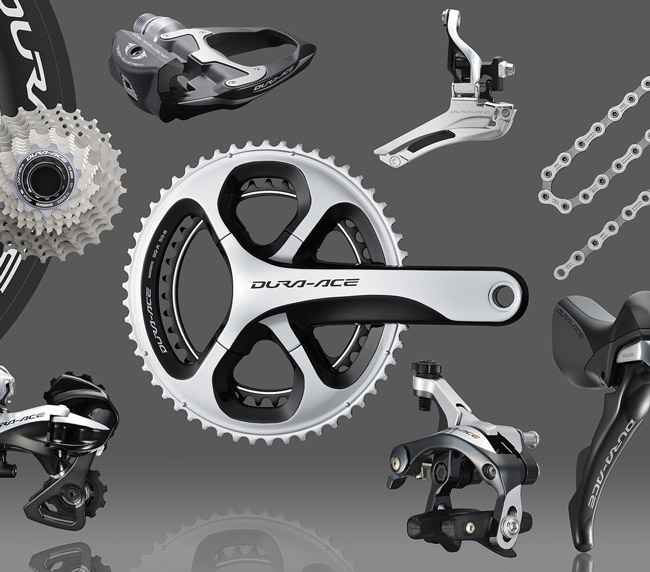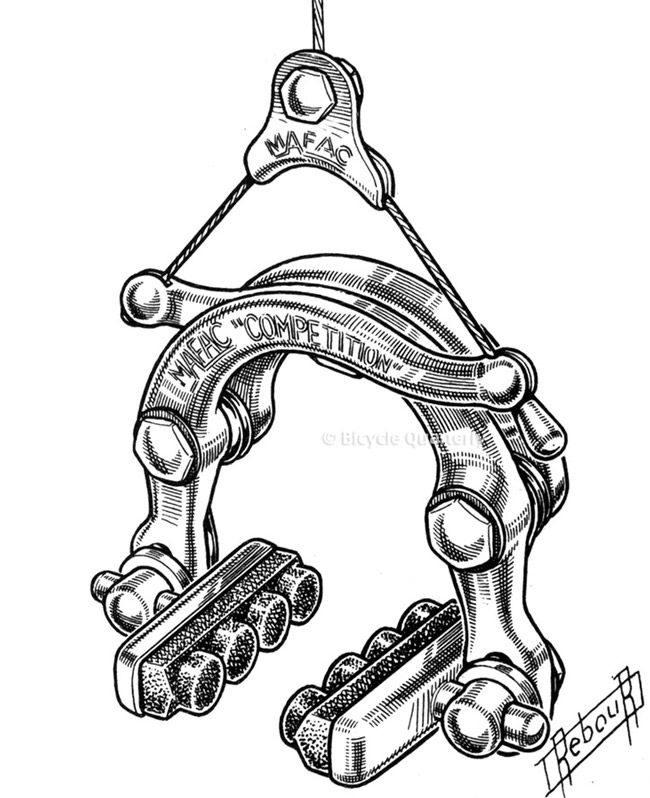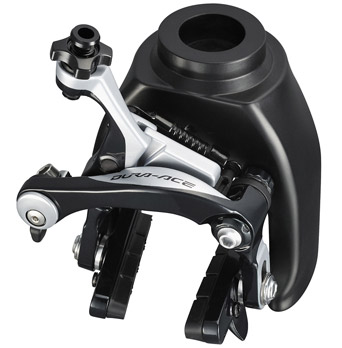New Dura-Ace: Inspired by Classic Technology?

A few days ago Shimano presented their new Dura-Ace group. Many reports focused on Shimano finally matching Campagnolo with 11-speed rear cassettes. To me, other features are more significant: The group reintroduces a lot of classic technology.


Look at the brakes and the pivot location: The new Dura-Ace brakes are essentially centerpull brakes. (The actuation of the Dura-Ace is different, so you don’t need a cable hanger, but what matters is where the lower pivots are located.) Shimano claims that the relocated pivots bring more stopping power and better modulation, which echoes why we prefer centerpull brakes.

Not only does Shimano offer a centerpull brake, but they even offer it for use with brazed-on pivots. From back in the very first issue of Bicycle Quarterly, we have advocated brazed-on pivots to reduce flex and improve stopping power. This also reduces the weight and makes the brakes more elegant. In Shimano’s case, the main advantage appears to be the ability to tuck the brake into the fork crown of time trial bikes. I think it will only be a matter of time until the brazed-on (or glued-on) pivots will show up on road bikes as well.
The new Dura-Ace brakes also are optimized for wider rims – following the trend of professional racers toward wider (25 mm) tires. I am afraid that they still won’t fit over a 32 mm tire with fenders, but it’s a step in the right direction.

The cranks are interesting, too, because they only offer a single “Compact” bolt-circle diameter. Just a few months ago, I wrote that it made little sense to offer different bolt-circles for “standard” and “compact” cranks. Shimano obviously agrees, and if you want a “standard” 53/39 chainring combination, you simply put larger chainrings on your “compact” cranks. Shimano also eliminated a spider arm, figuring that five was more than needed.* Maybe in a few years, they’ll remove another arm and reduce the bolt-circle further, to arrive at a modern version of the René Herse cranks?
* When you look carefully, you see that the arms aren’t equally spaced. Shimano’s marketing information states that they don’t need to support the rings during the dead spots of the pedal stroke, when power output is greatly reduced.


